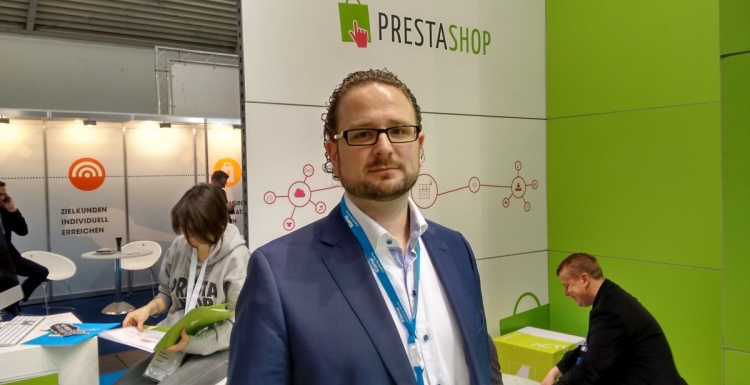Interview • 07.08.2015
“Online stores using responsive design cannot be tested enough“
Interview with Michel Sperlich, Managing Director of onlinedesign.eu
A lot of development work is needed before an online store can be launched. All store components need to work properly – and with all end devices. This requires extensive tests. These days, developers are able to outsource this testing to the crowd – that being an exclusive group of users. Michel Sperlich, Managing Director of the onlinedesign.eu agency, explains the principles of crowdtesting for online shops.Mr. Sperlich, why is programming an online store more complicated today than it used to be in the past?
Today, the programming complexity of an online store increases due to the large number of end devices. In the past, testing different browsers and screen resolutions with the same hardware was still sufficient. However, because of the trend in mobile end devices with their different display formats, online stores with responsive design require significantly more testing. As a store developer, we are aware of the typical error sources of course and are usually able to eliminate them without any difficulty. Since experience shows however that some small problems always remain, we recently entered into a partnership with the crowdtesting provider Testbirds. Within the scope of this partnership with Testbirds, the stores we design are being tested by a large crowd of users.
What are the advantages of crowdtesting compared with other test methods?
Crowdtesting enables us to cover a much larger scope of hardware and software configurations than would be possible just within our agency. With its crowd, Testbirds currently has access to approximately 160,000 hardware and software configurations – a single company would not be able to achieve that. The testers are “real“ users that have registered online at Testbirds.
More than ever you cannot test enough when it comes to responsive design. After all, you always run the risk of succumbing to organizational blindness with complex projects, not just with the developer but also the store owners. This is why it is especially important for us to test our work by an outside entity. Crowdtesting is also considered especially meaningful because users test the stores in their familiar surroundings at home instead of in a simulation lab.
Which store functions are primarily being tested?
This varies depending on the project. For example, if an existing and operating store is going to be relaunched, we focus particularly on usability aspects and less on the basic technical functionality. If the emphasis is on going live with a brand-new store, pure bug testing is done where the testers are asked to find all errors that might have been included in the programming. They run through a specified typical user scenario ranging from setting up an account to login to searching for a product, preparing a shopping cart and ordering. Of course, the test group can also be asked to try out a specific new feature in the store and compare it to the functionality of competitor stores.

The client can customize the user group to test any store. Recently, for instance, we relaunched the online store of our client Hofmeister Pferdesport. Unfortunately, there is nobody in our agency who is familiar with equestrian sports, yet there are many people in the crowd of course that match the store’s customer profile. Users who are into this subject on a personal level usually have a much better feel for the functions and contents of this type of store. This is why crowdtesting is an enormous advantage, especially for stores that address a more specific group of customers.
How does error correction work after the tester feedback?
Initially, the focus group compiles the information on the detected errors in the store. The test results can very simply be reviewed in an Excel file. Testbirds also provides the option to call up the results via specific online platforms. Here, testers subsequently post a description of the problem and a short video or screenshot. After Testbirds has corrected the problems found in the store, another round of feedback follows where the store is once again being tested. Afterward, we are able to hand off the project to the customer. Testbirds also prepares a final report that confirms the successful implementation of test results by an independent source.
How is this testing service received by store operators?
Most of our clients feel confident about the extensive tests. Our regular customers are usually excited about the chance to receive feedback again and in doing so improving their store even further. The focus here is typically on usability tests that are particularly beneficial for stores whose design has been around for several years. Oftentimes, there is still an enormous potential for optimization and modernization the retailer would like to take advantage of.
Interview by Daniel Stöter, iXtenso.com
channels: online trading, e-commerce, shop systems








